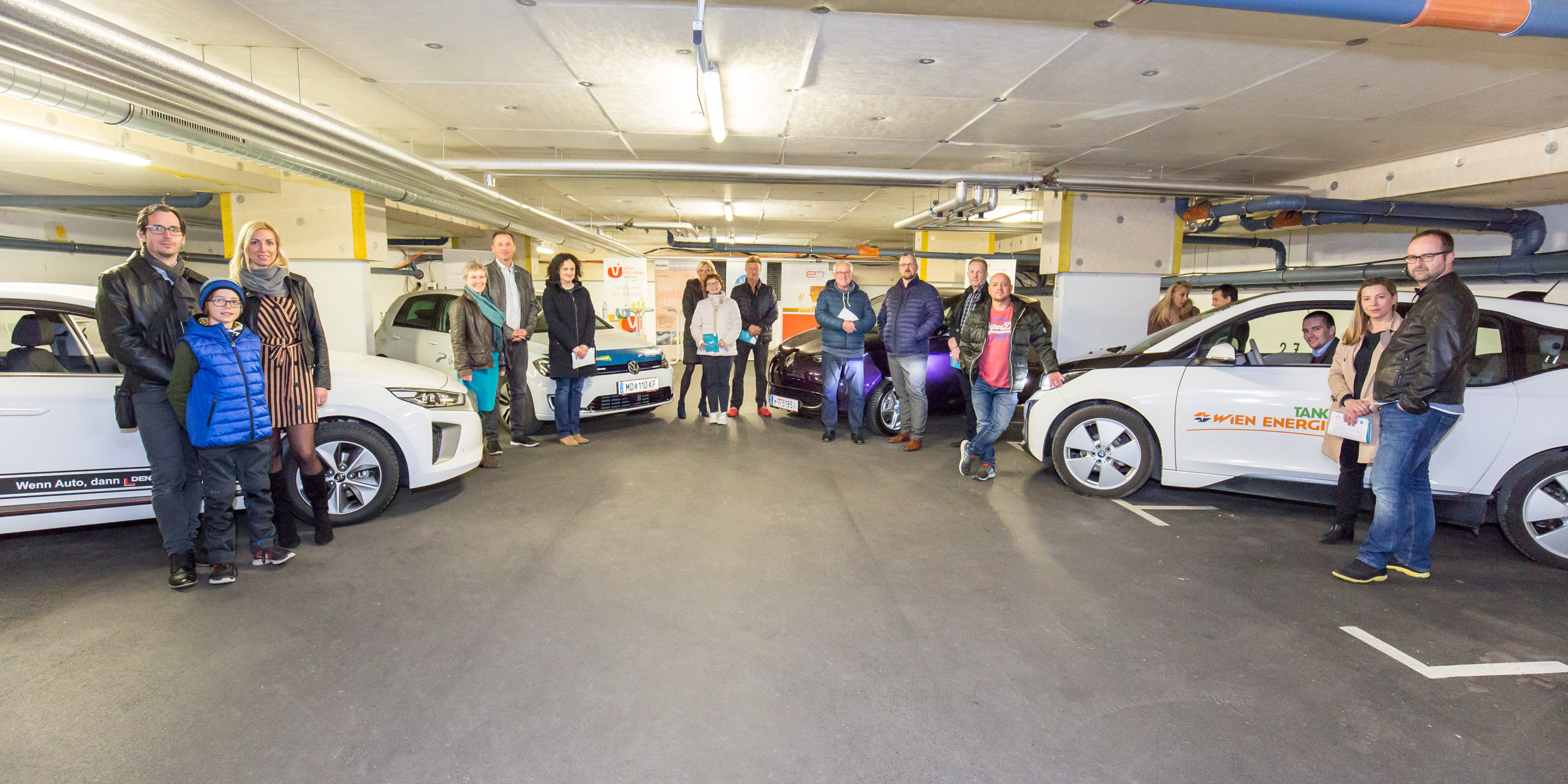In spring 2019, experts conducted a study in a housing complex in Vienna’s 23rd municipal district to test how many garage parking spaces could be equipped with charging stations without overloading the existing power network. The crucial question was how many electric vehicles could be charged simultaneously each evening. For the purposes of the study, a number of residents were provided with an electric vehicle for a six-week period. The results showed that the existing power capacity is sufficient for several e-vehicles to be charged simultaneously. The findings are also helpful with a view to retrofitting electricity supply and charging infrastructure in existing urban areas to give all citizens of Vienna city-wide access to e-mobility in future.
Encouraging results
The involvement of housing developer “Wien Süd” meant that it was possible to run the pilot project in a housing complex in Vienna’s 23rd municipal district with a conventional grid connection. Wien Energie installed e-charging stations in the building’s underground car park and tenants were provided with 12 electrical vehicles free of charge for a six-week period to simulate an e-mobility share of 30%–50%. 12 charging stations (each with a capacity of 11kW) with a load management system were thus made available in the 22-household complex.
The crucial finding was that half of the households were able to charge their vehicles with no problems and without requiring any significant expansion of network capacity. Even at evening peak times when all the households were charging simultaneously, they never required more than just over half of the available capacity. Moreover, the participating drivers also quickly became accustomed to the new technology. The results showed that 85% of vehicle charging was done at home and 15% in public spaces, and that the vehicles were largely used for short journeys of under 50 kilometres within the city boundaries. Quick charging stations were not used in the private sphere.
Electromobility for Smart City Wien
Precise monitoring of the network load has shown that there is sufficient capacity to operate substantial numbers of e-charging stations in existing residential buildings in Vienna. This is fully in line with the Smart City Wien Framework Strategy, given that electromobility is an essential component of the shift to sustainable energy and mobility systems. After all, car traffic in Vienna is responsible for around 40% of local greenhouse gas emissions. Retrofitting of e-charging infrastructure to provide blanket coverage in existing residential buildings and in the public space is therefore a decisive factor for the large-scale rollout of electromobility in cities. The pilot project was therefore designed to address two key technical issues that had not yet been sufficiently clarified:
- Is the existing power capacity of buildings sufficient for a large number of vehicles in daily use?
- To what extent can load management ensure that a significant number of charging stations can be retrofitted in existing residential buildings without needing to purchase significant additional connected load capacity or build additional transformers?
The project was implemented by Wien Energie, Wiener Netze, Wien Süd, e7 and Urban Innovation Vienna on behalf of the Climate and Energy Fund as part of the “Electromobility in Practice” programme.
Contact
Gerald Franz
UIV Urban Innovation Vienna GmbH
E-Mail: franz@urbaninnovation.at
This post is also available in: German




